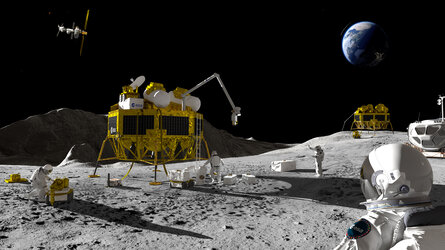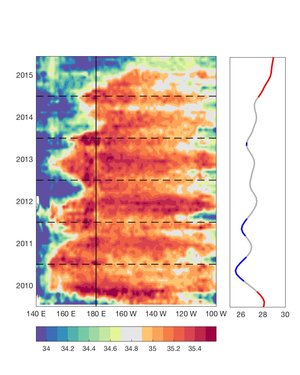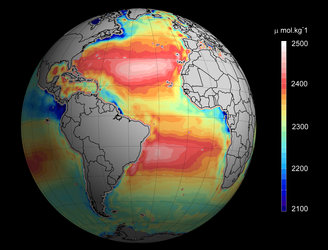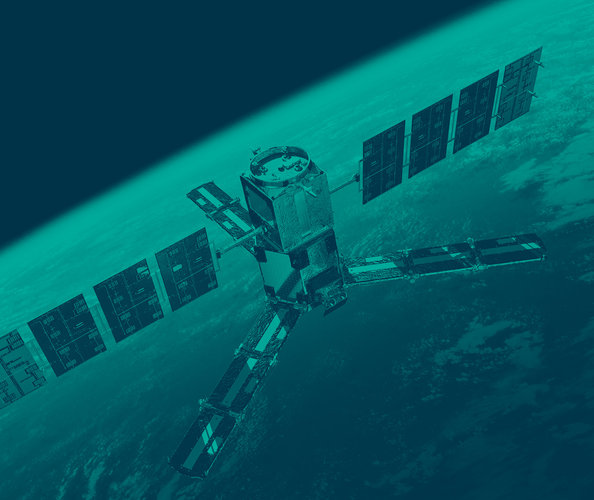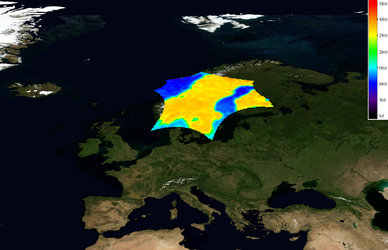SMOS brings Mediterranean salinity into focus
ESA’s SMOS mission maps variations in soil moisture and salt in the surface waters of the open oceans. When the satellite was designed, it was not envisaged that it would be able to measure salinity in smaller seas like the Mediterranean, but SMOS has again surpassed expectations.
The satellite carries a microwave instrument to capture images of ‘brightness temperature’, which correspond to microwave radiation emitted from Earth’s surface and can be related to soil moisture and ocean salinity.
While this information is fulfilling the mission’s core objective of improving our understanding of Earth’s water cycle, SMOS has found a multitude of other uses such as tracking hurricanes, measuring thin ice floating in the polar oceans and improving crop-yield forecasts.
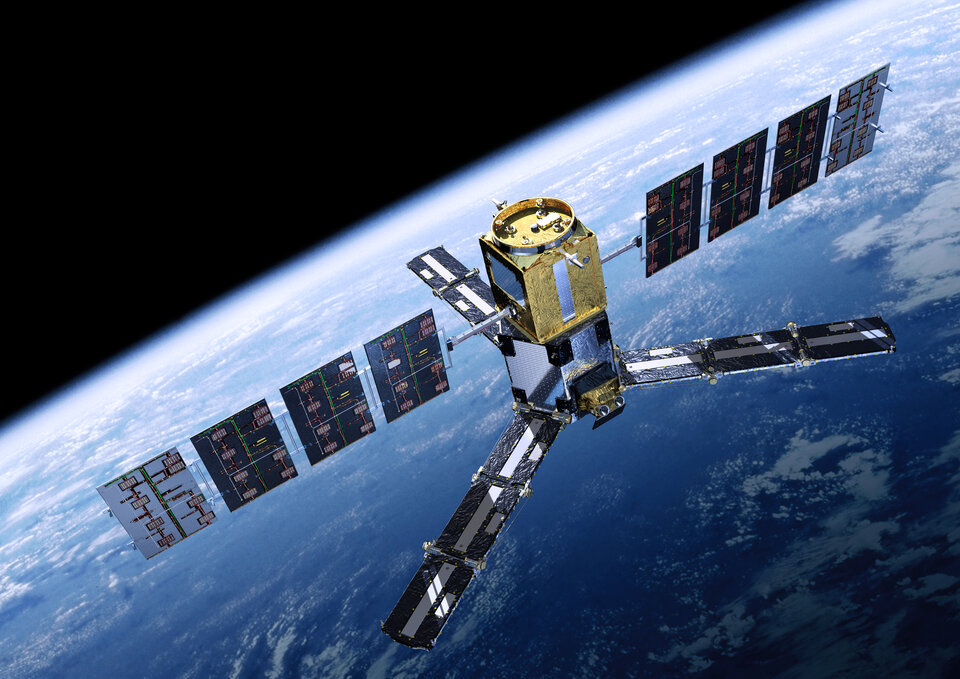
Its measurements of salinity in the open oceans not only help us understand how our oceans are responding to climate change, but are also improving our understanding of issues such as ocean acidification and large-scale events like El Niño.
However, these processes take a long time so smaller seas such as the Mediterranean, where processes occur over much shorter timescales, offer an ideal laboratory to study ocean dynamics.
For instance, salinity maps are needed to understand how the flow of water from the Atlantic Ocean through the Strait of Gibraltar forms the Alboran Gyre in the western Mediterranean Sea.
Until recently, SMOS’ observations of salinity in the Mediterranean were hampered for two reasons.
The biggest issue, and one that was understood when the mission was designed, was one of ‘land–sea contamination’. This is because measurements taken over the surrounding land leach into the ocean data and affect the quality.
The other problem, which was not foreseen, is the extent of radio interference.

Once SMOS was launched in 2009, it transpired that its signal was being interrupted by numerous illegal transmitters around the world. However, by working with national frequency protection authorities, 75% of these transmitters have now been shut down.
Nevertheless, this is a laborious process and some regions, such as the Libyan coast and the eastern Mediterranean Sea, remain contaminated where mitigation strategies have not yet been successful.
Thanks to the determination of scientists to address these problems and with the support of ESA’s Earth Observation Support to Science Element, SMOS can now map salinity in much of the Mediterranean Sea.
The Barcelona Expert Center in Spain has addressed both the problem of land–sea contamination and also reduced the effects of interference by making changes to the standard data processing chain.
Antonio Turiel from the centre said, “We look out over the Mediterranean Sea every day from our institute in Barcelona and we were determined to get to grips with the problem.
“The solution we came up with actually meant going back to each individual measurement of brightness temperature and filtering and processing it in a different way.”

The University of Liege in Belgium has also tackled this issue by proposing a method for reducing noise.
Aida Alvera Azcárate from the University of Liege said, “Land–sea contamination and radio-frequency interference in the Mediterranean Sea cause the level of unwanted signal in the data to be rather high.
“We have developed an approach to extract the actual geophysical signal from the noisy data, increasing the accuracy of the final dataset.”
ESA’s SMOS mission manager, Susanne Mecklenburg, said, “Both institutes have done fabulous work in addressing the limitations we were facing when looking at changes of salinity in the Mediterranean Sea. Their work extends the catalogue of applications that SMOS can support to benefit science and society at large.
“Once again we see SMOS deliver way beyond its original promise – and I’m sure there will be more successes to come.”














 Germany
Germany
 Austria
Austria
 Belgium
Belgium
 Denmark
Denmark
 Spain
Spain
 Estonia
Estonia
 Finland
Finland
 France
France
 Greece
Greece
 Hungary
Hungary
 Ireland
Ireland
 Italy
Italy
 Luxembourg
Luxembourg
 Norway
Norway
 The Netherlands
The Netherlands
 Poland
Poland
 Portugal
Portugal
 Czechia
Czechia
 Romania
Romania
 United Kingdom
United Kingdom
 Slovenia
Slovenia
 Sweden
Sweden
 Switzerland
Switzerland











